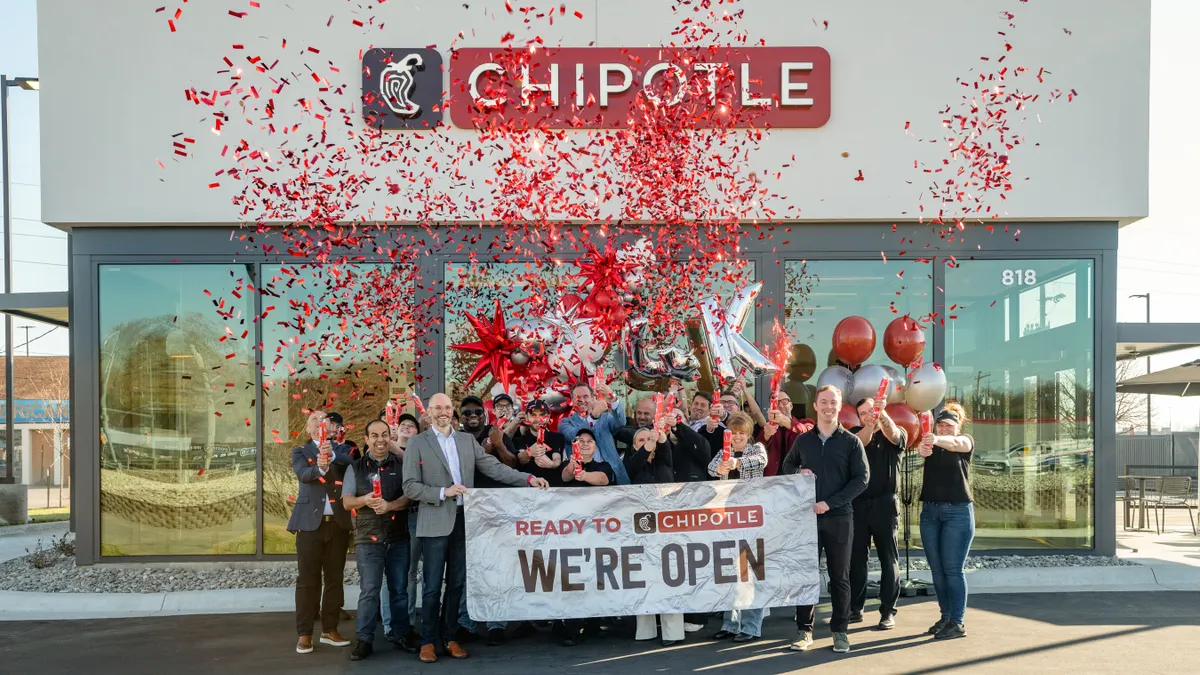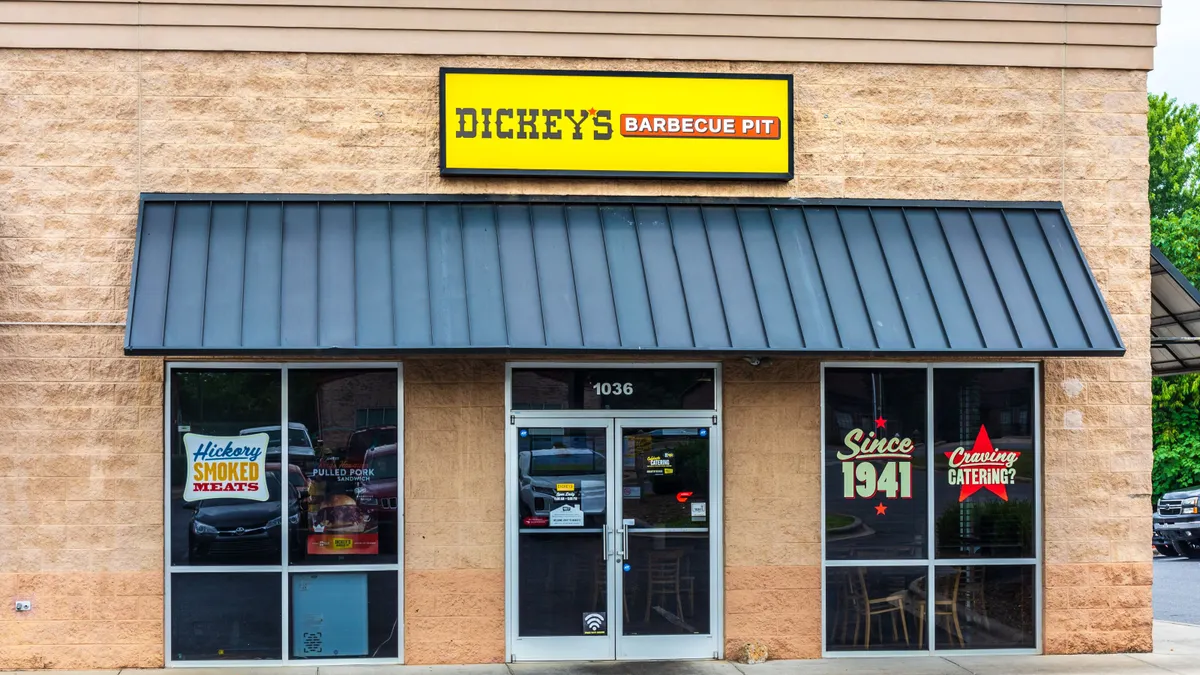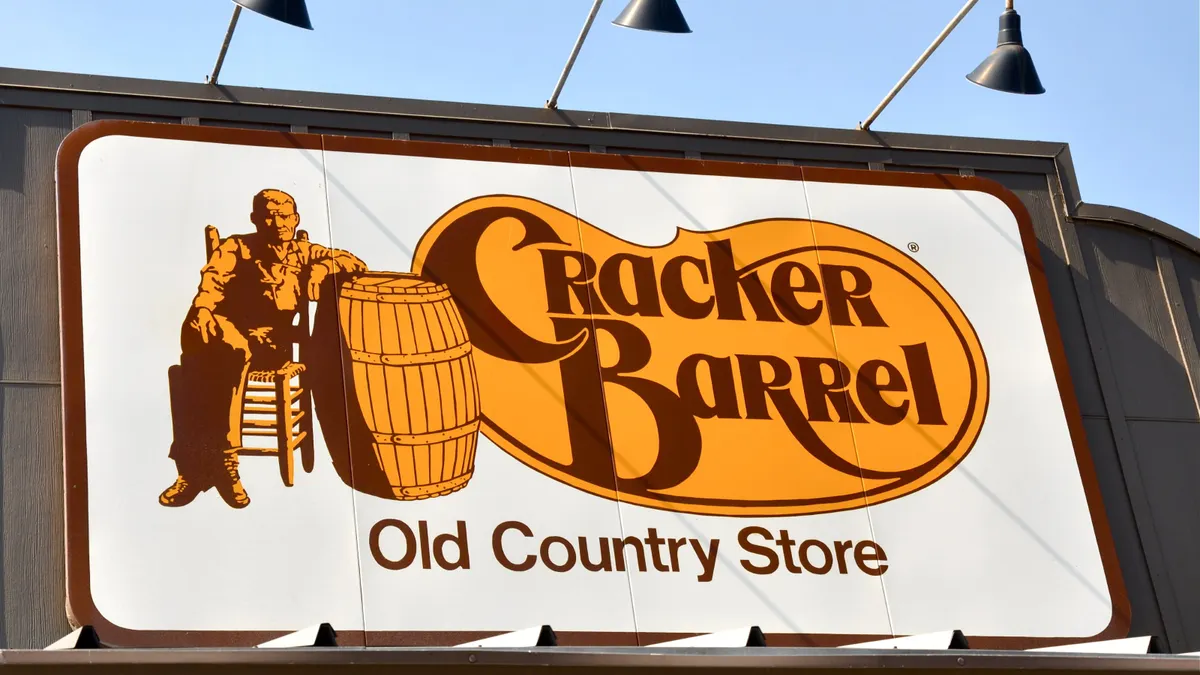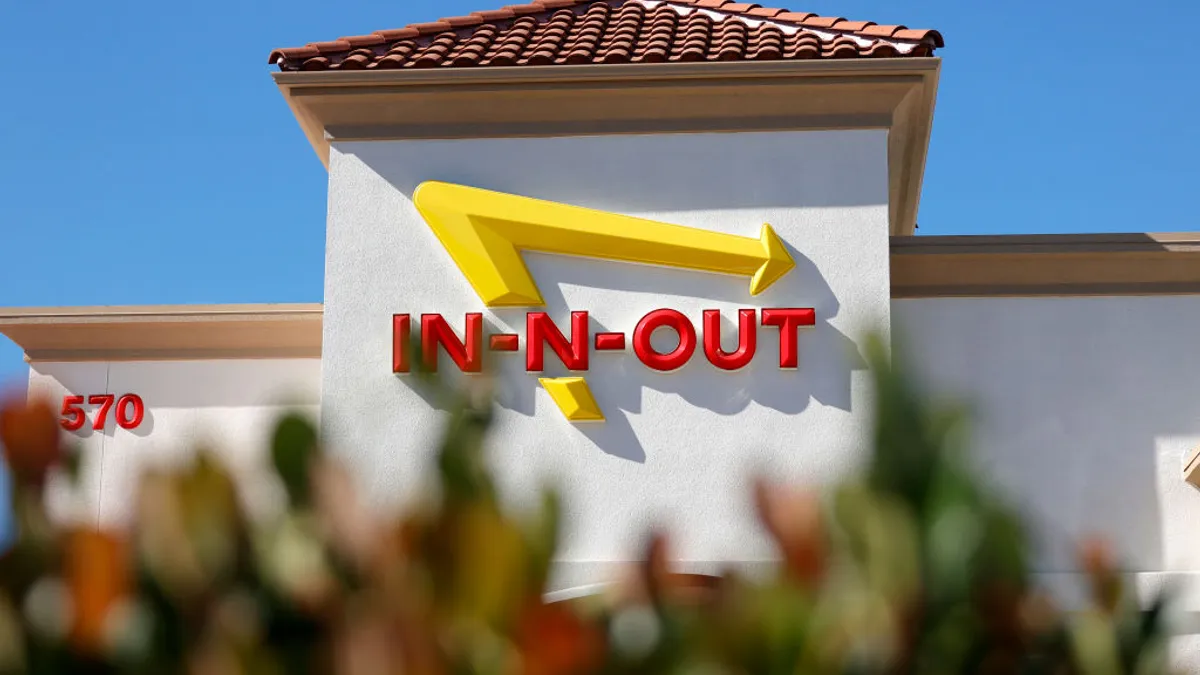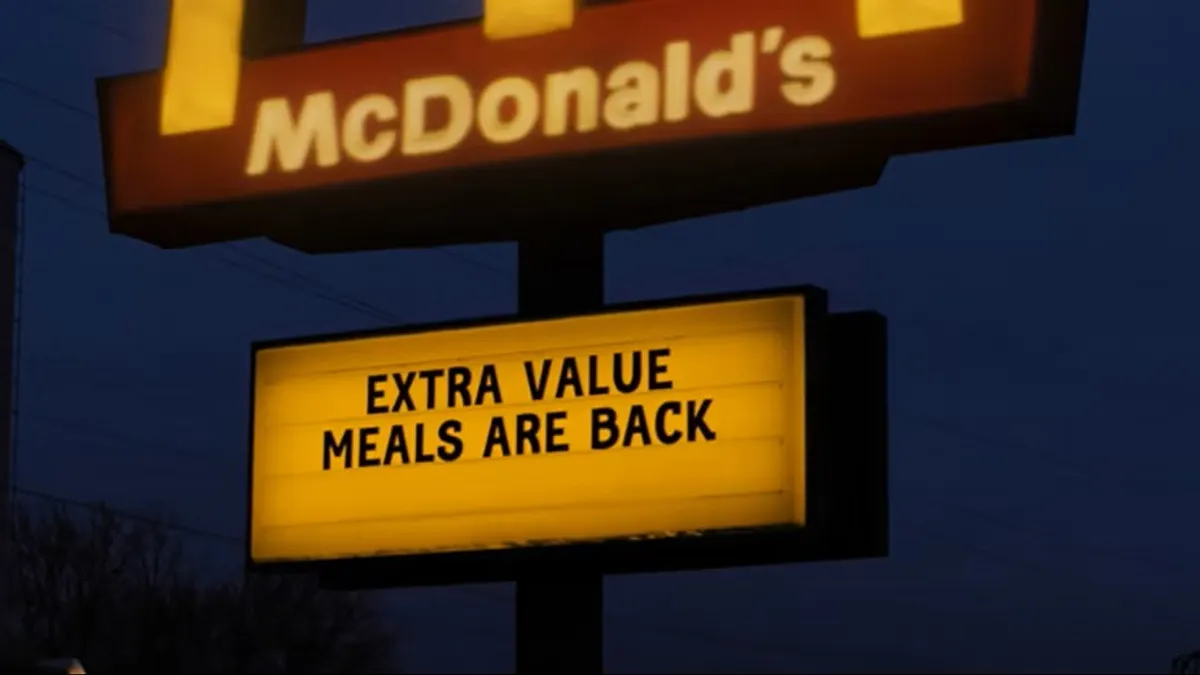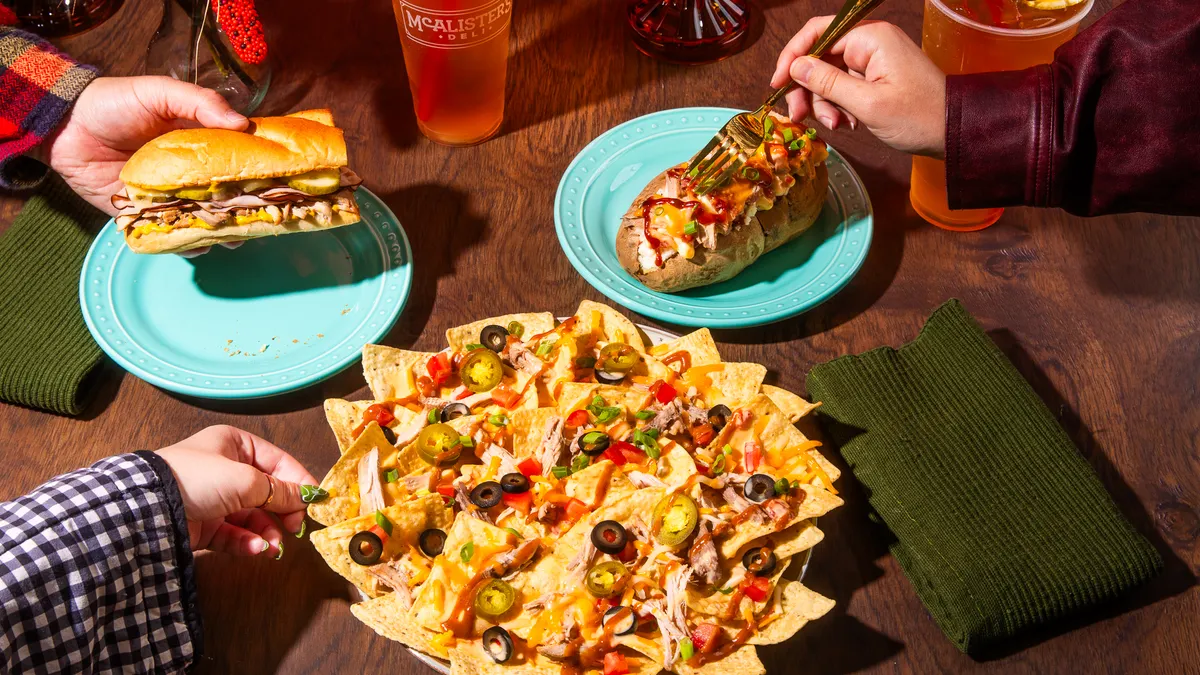While much has been said about the impact of robots and automation on restaurant operations, there are two more technologies that could dramatically change the industry: blockchain and 5G.
These technologies are anticipated to provide more transparency, better traceability and more streamlined automation.
The only downside? The restaurant industry has already fallen well behind other industries when it comes to tech adoption. While many operators are adding ordering, voice assistant capabilities, loyalty programs and other customer-facing capabilities, others have yet to do so, and could soon be left behind in an advancing industry.
“There has never been a time in history where technology has been more critical than it is today and tomorrow it will be more critical in the restaurant industry,” AT&T Assistant Vice President, Retail Solutions Jay Melone told Restaurant Dive.
5G will super charge operations
Mobility as a whole has already been transforming restaurant operations, Melone said. From mobile and online ordering to digital signage and cloud-based scheduling platforms, many restaurants have already moved away from analog operations, he said.
5G, which Melone said is expected to be rolled out next year and be widely used within the next few years, will likely supercharge many of these current trends.
The fifth generation of cellular technology will allow for faster speeds and ultra low latency, Melone said. That means faster downloads and data processing and more computing power. Instead of a technology that just does one thing, multiple applications will be able to run on one device, he said.
The new technology will also impact delivery, from the creation of more smart cars and drones to the reduced need for restaurants to have a storefront, he said. That could mean more ghost restaurants taking orders and using a robot to complete the delivery.
While 4G LTE created today’s current environment where users can search for and navigate to a restaurant and easily post and share videos and photos on social media, 5G will speed up this process for users. Instead of downloading a video in seven minutes on today’s network, it could take eight seconds on 5G.
5G will also allow for better robotics, automation and tracking of restaurant operations, he said. It will allow for a more interactive kitchen with smart equipment talking to each other and communicating with crew members on kitchen operations that need to be addressed, making work more efficient, he said.
“5G is going to give us the ability to track at a higher level than we have ever been able to,” he said. “I think how we source, track and even dispose of food might change with 5G.”
The new technology will also allow for a greater use of virtual reality, which could be used as a training tool within restaurants, Melone said in a blog post. This technology can incorporate haptics, which can stimulate a sense of touch and could evolve to simulate smell and weight.
“Your crew may be flipping the virtual burger while feeling the tool in their hands, and hearing the food cook, while smelling the aromas,” Melone said in the blog post. “All without using your valuable inventory.”
Blockchain is more than just cryptocurrency
Food traceability is already being developed via blockchain. While much of what is currently thought of as blockchain is for transactions and cryptocurrency, it is much more than that, IBM Food Trust Paul Chang said during a presentation at the National Restaurant Association Show.
“We’re just at the tip of the iceberg,” Chang said. “We’re just scratching the surface of what blockchain can do for your business.”
Blockchain has secured data that is verified by multiple parties and incorporates automated processes, he said.
“Once you have trusted data, then you can digitally execute contractual agreements.”
That is particularly important with supply chain traceability. Instead of today’s current point-to-point communication that involves a lot of back and forth among multiple parties, blockchain creates a network of companies that can communicate in real time, he said.
Golden State Foods, one of McDonald’s biggest beef suppliers, uses blockchain to better track its beef supply. Once the chain switched from frozen to fresh beef, the shelf life was reduced from a few months to two weeks, he said. The food supplier has been using blockchain to better capture food temperature and production times so that franchisees and their employees know the exact shelf life left and which products to use first, Chang said.
Refrigerators also now have iPads that keeps track of the shelf life of beef products so that staff know which supply to use first, Chang said. The automation of the system also keeps track of the food during transportation so if something happens during the process that makes the supply not usable, the system will automatically reject the shipment and handle the financial terms, he said.
Golden State Foods can also keep track of how quickly restaurants are going through the beef supply so it can better predict when and how much to produce, he said.
Traceability of food from farm to table is also being used by other restaurant operators. Starbucks is using blockchain to share where a customer’s coffee comes from, a feature that will be added to its mobile app. Customers will be able to scan a coffee bag and see its journey from farm to store.
Fogo de Chao is also working with blockchain to improve food transparency, which has not been easy so far, CEO Barry McGowan told Restaurant Dive.
"It’s frustrating me because I, like everybody, want full traceability in food. It’s hard to do. I’ve realized talking to everybody that there’s so much technology out there and everyone is talking about the same thing, but nobody is talking together,” he said. “There’s no collaboration."
Fogo de Chao is working with Herdx to use satellite driven tags that keep track of each animal’s health and behavior, McGowan said.
"Let’s prove that it can be done. You’ve got to go [to] the rancher. You’ve got to convince him. They’re already doing stuff that’s right, but all of their data is going nowhere,” he said. “We’re trying to take their data in an open source platform and put it in blockchain to carry it through the process. I think we’re real close."
Using satellite driven tags from each animal, ranchers can access information on animals and their behavior on the cloud and monitor the health of a herd using their cell phone. This data will allow ranchers to find cattle that may be getting sick so they can be isolated and medically treated, he said. The company is expecting to implement a regional test in 12 to 16 months with its ranch partners in New Zealand, and will roll it out systemwide in the next few years.
“I’m hoping that in three to four years from now, we’ll have full traceability,” he said.
The pressure is on for restaurants to implement technology
While 5G, mobility and blockchain hold promise for the industry, it will take time for restaurants to integrate them into their operations. Many are just getting into online and mobile ordering, digital menu boards, self-order kiosks and other digital and cloud-based systems.
Nearly a third of restaurant operators say they are behind the restaurant’s current pace of technology adoption, according to a National Restaurant Association and Technomic survey of 400 operators shared during the NRA show. More than half of the casual dining operators said they are behind the curve, Technomic principal Melissa Wilson told attendees during the NRA show.
But half of restaurant operators said they are keeping up with the restaurant industry, which is notoriously behind other industries in terms of technology.
This discrepancy is even more pronounced when Technomic compared how delivery users were ordering versus what restaurants were providing.
About half of consumers placed off-premise orders through a restaurant’s website while 45% of operators had online ordering on their websites. About 43% of users placed orders via a restaurant’s app, but only 18% of operators offered mobile app ordering. A third of consumers are ordering from restaurants via voice assistants, but only 12% of restaurants have that option.
One out of five heavy delivery users are already using voice assistant technology on a regular basis, she said.
“The future that we think is far out is really already here,” she said.
Operators who were planning to invest in technology were focusing on adding a mobile app for ordering and payment, inventory management software that is linked to POS, business analytics and its own website for off-premise orders, she said.
About 16% of operators said they were using location intelligence technology, 20% were using geofencing and 12% were using voice assistant ordering even though those that offer these technologies say they have had a large positive impact on their business.
Even though technology can improve operations, implementation has been slow because of overriding costs. Operators are also not sure of what to invest in or how to make customers and staff comfortable with new technology. For those companies that are investing in technology, 14% said they have experienced challenges while teaching employees how to use it and absorbing the costs it incurs.
“There’s really an overriding fear of change here,” she said.
Thai Phi Le contributed to this report.







